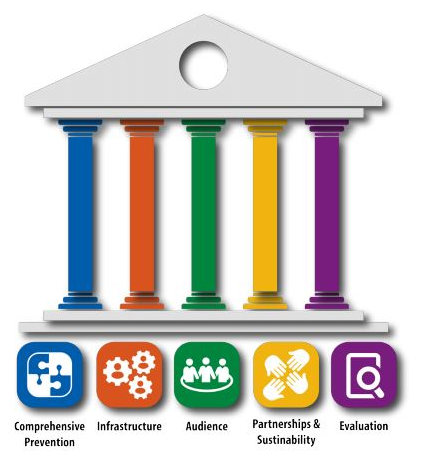Medium
- WCSAP Webpage
Topic
- Campus
- Schools & Campus
Over the last few years The White House has taken actions to call attention to the scope of campus sexual violence, provide guidance to schools on how to effectively respond when violence has occurred, improve Title IX enforcement, and prevent campus sexual assault.
The White House and partners have used many avenues such as launching a resource website and large-scale public awareness campaigns to start the conversation in communities. Additionally, The White House worked with the Centers for Disease Control and Prevention (CDC) to address the issue of prevention.
The White House and CDC conducted Think Tank and Action Planning meetings with experts from the Justice Department's Office on Violence Against Women, Sex Offender SMART Office, Department of Education, state departments of health and state sexual violence coalitions involved in the Rape Prevention Education program, college/university prevention educators and administrators, students, law enforcement, and researchers.
The resource guide Sexual Violence on Campus: Strategies for Prevention, released by the CDC in 2016, is the product of a multi-year process to create guidance and identify tools to prevent sexual violence on college campuses.
Framework for Campus Sexual Violence Prevention Efforts
Through the meetings with experts and stakeholders, CDC has developed a promising practices framework for campus sexual violence prevention. This begins with five components for addressing sexual violence on campuses (see in the image below). And for each of these components, there are several action items outlined. More details on each can be found in the resource guide.
Five Component Framework

Comprehensive Prevention in Action
- Programming should work across the Social Ecological Model (see the table below for examples of this).
- Program design needs to meet the 9 Principles of Prevention.
- Utilize data, such as needs assessments and climate surveys, to ensure the prevention efforts are relevant and specific to that community.
- Employ a multi-sector approach; community response teams
- Campuses should coordinate efforts and cross-train staff in prevention & response.
- Campuses should partner with community-based sexual assault programs and other community service organizations.
- Effective efforts will promote a gender-equity perspective, address intersectional forms of violence and oppression, and include survivors and students.
| Example of a Comprehensive Campus-Based Prevention Strategy | |||
|---|---|---|---|
| Individual | Relationship | Community | Societal |
|
Build bystander intervention and healthy relationship skills and establish positive norms about gender, sexuality, and violence with evidence-informed interactive, multi-session intervention for incoming students |
Coach-implemented intervention for male athletes addressing hyper-masculine peer norms that support or facilitate sexual violence Dorm-based intervention that reinforces positive norms and skills relate to bystander behavior and healthy sexuality |
Engage campus leadership to promote culture of safety and respect Social marketing campaign to address norms related to sexual violence, gender, sexuality Hot spot mapping to identify and monitor unsafe areas on campus |
Community initiatives to implement/enforce alcohol policy Efforts to reduce excessive alcohol use or problem outlets Strengthen/support enforcement, response, and reporting policies on and off campus |
| —> Consistent messages across campus policies and programs —> | |||
Infrastructure in Action
- Well trained staff
- Standardized training
- Hire dedicated prevention staff
- Institutionalize prevention
- Create a team/workgroup/committee
- Foster relationships with referral services
- Incorporate violence prevention with other prevention programs
- Trauma-informed approach
- Work across all the types of violence
Appealing to Audiences in Action
- Identify champions
- The messenger matters
- Tailor to specific communities; one-size doesn't fit all;
- Plan for differences in types of institutions
- Engage parents
- Use practice & social media; meet students where they are;
- Active & visible bystanders; campus culture where SV is not tolerated
Partnerships to Sustain Prevention in Action
- Develop MOUs
- Ensure leaders are bought in
- Create permanent staff positions
- Include students in planning & programming
- Partner with health services
Evaluation in Action
- Rigorously evaluate programs, practices, and policies
- Focus outcomes on reducing perpetration
- Capacity to evaluate
- Value participatory research
- Require logic models and theories of change
- Build connections between research and practice
Additional Elements of the Guide
- The authors of the guide reference the recently published CDC Sexual Violence Technical Package and discuss the ways in which these same strategies can be applied on a college campus.
- The appendix provides a list of potential partners, a sample action plan, & other campus sexual violence resources.